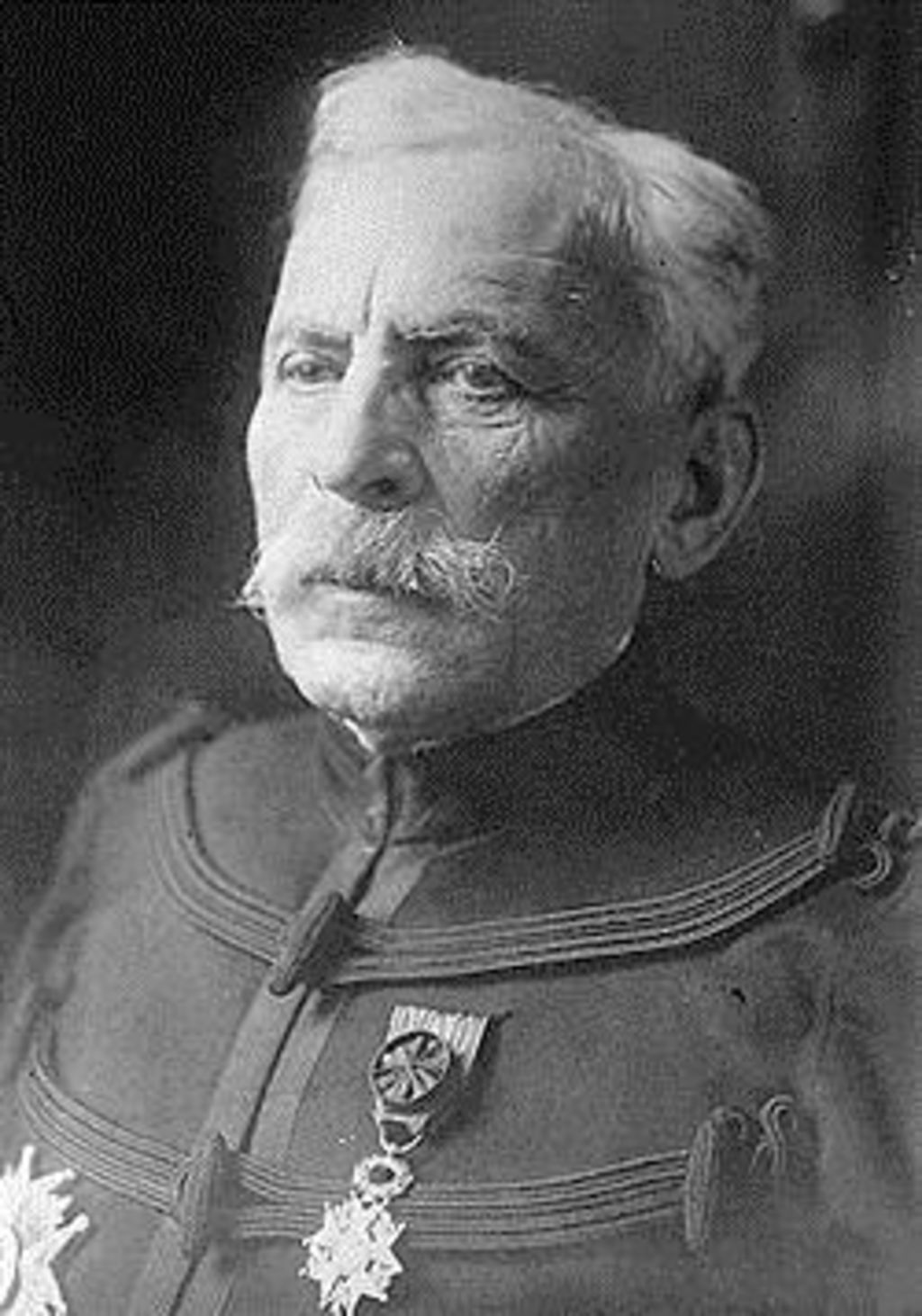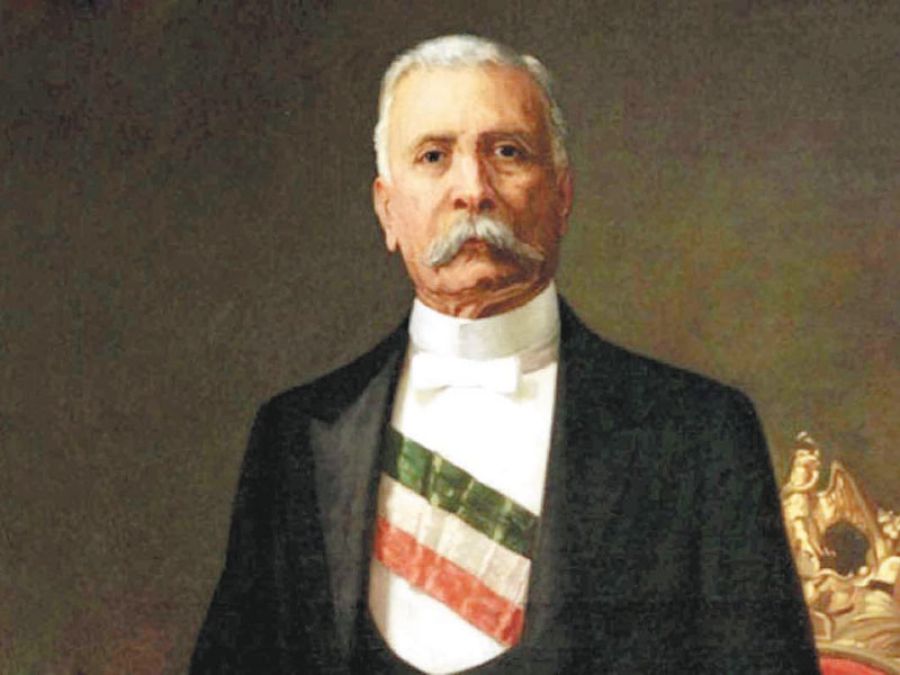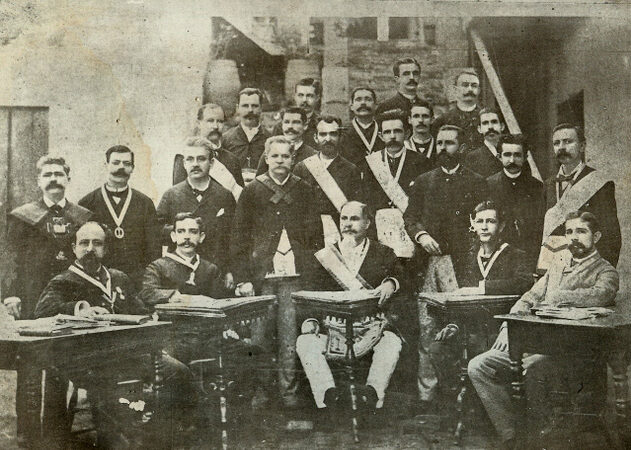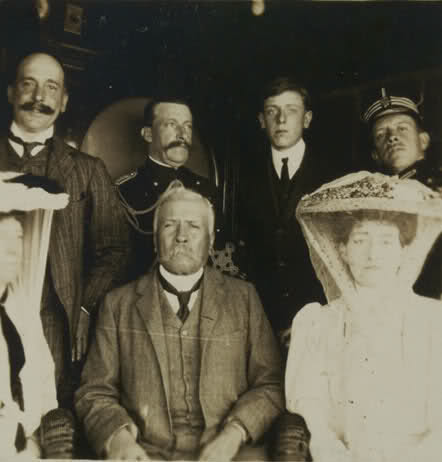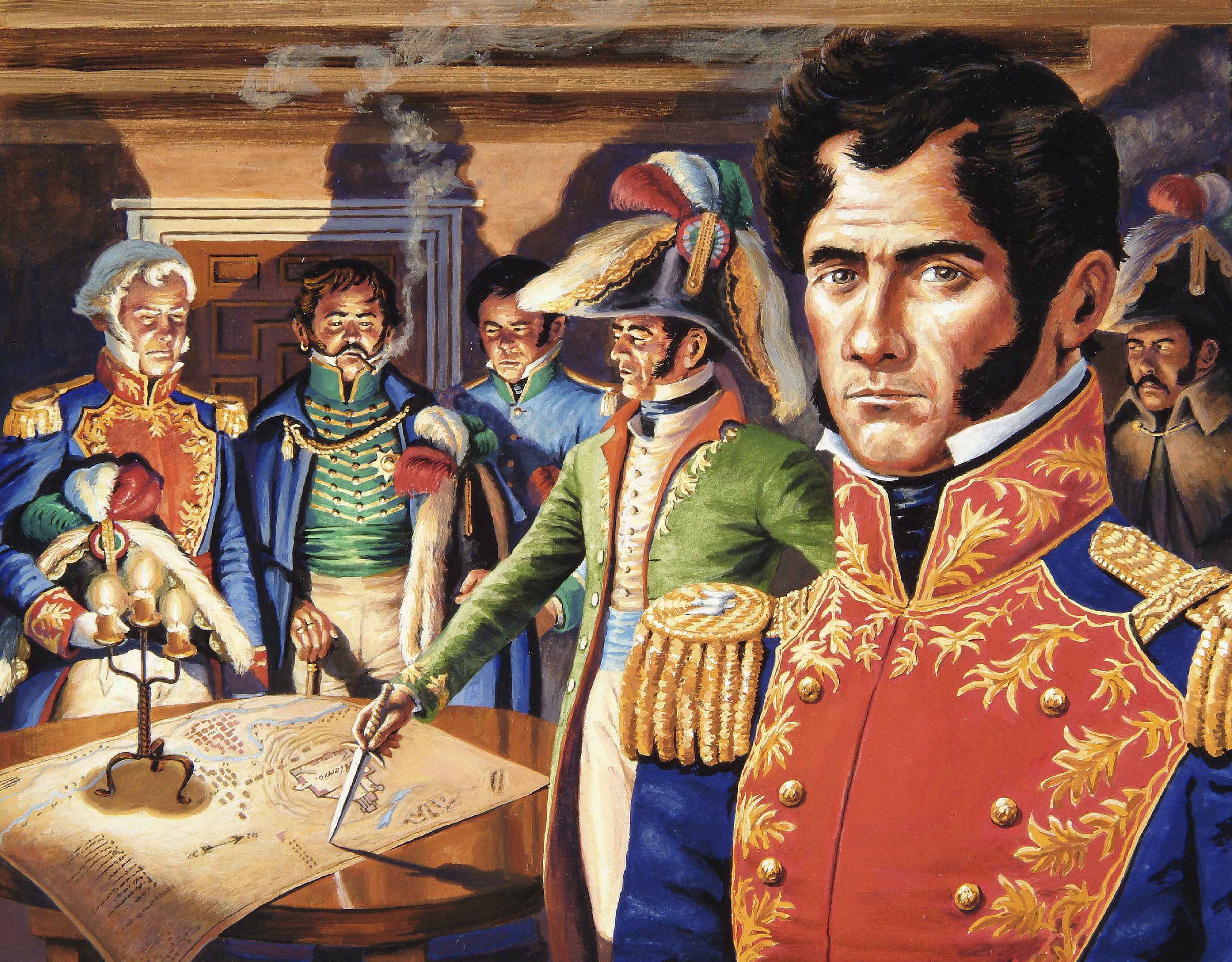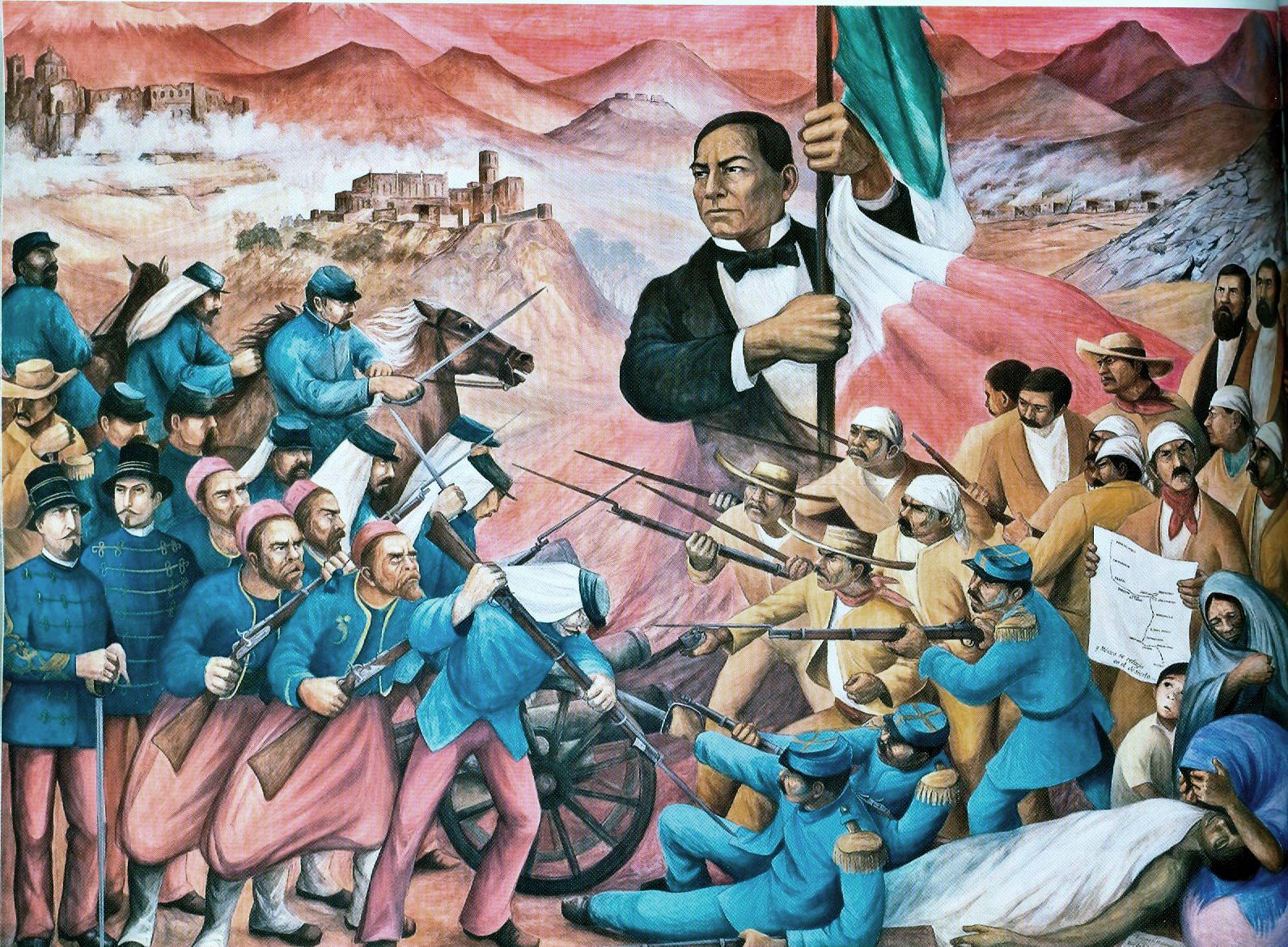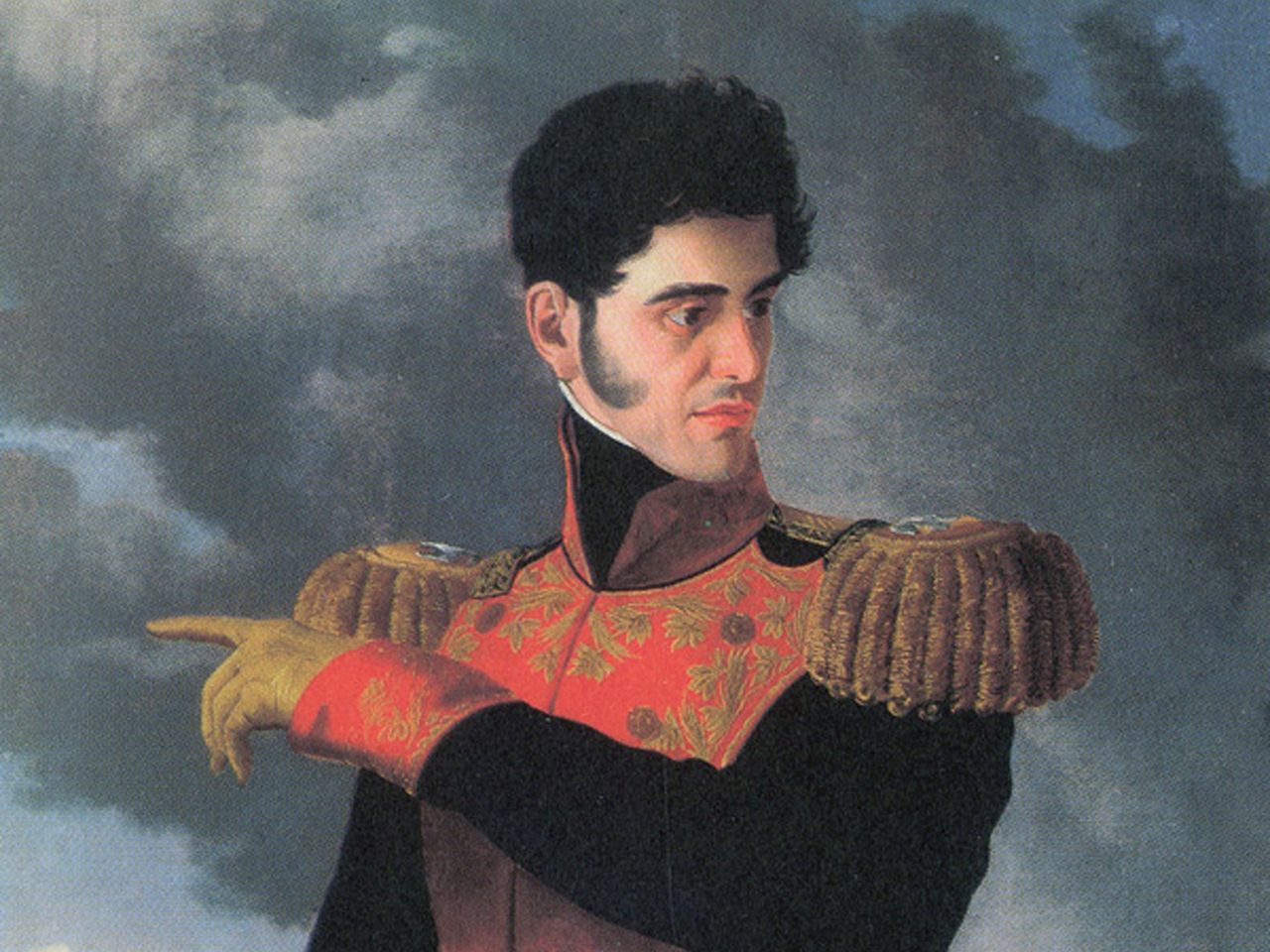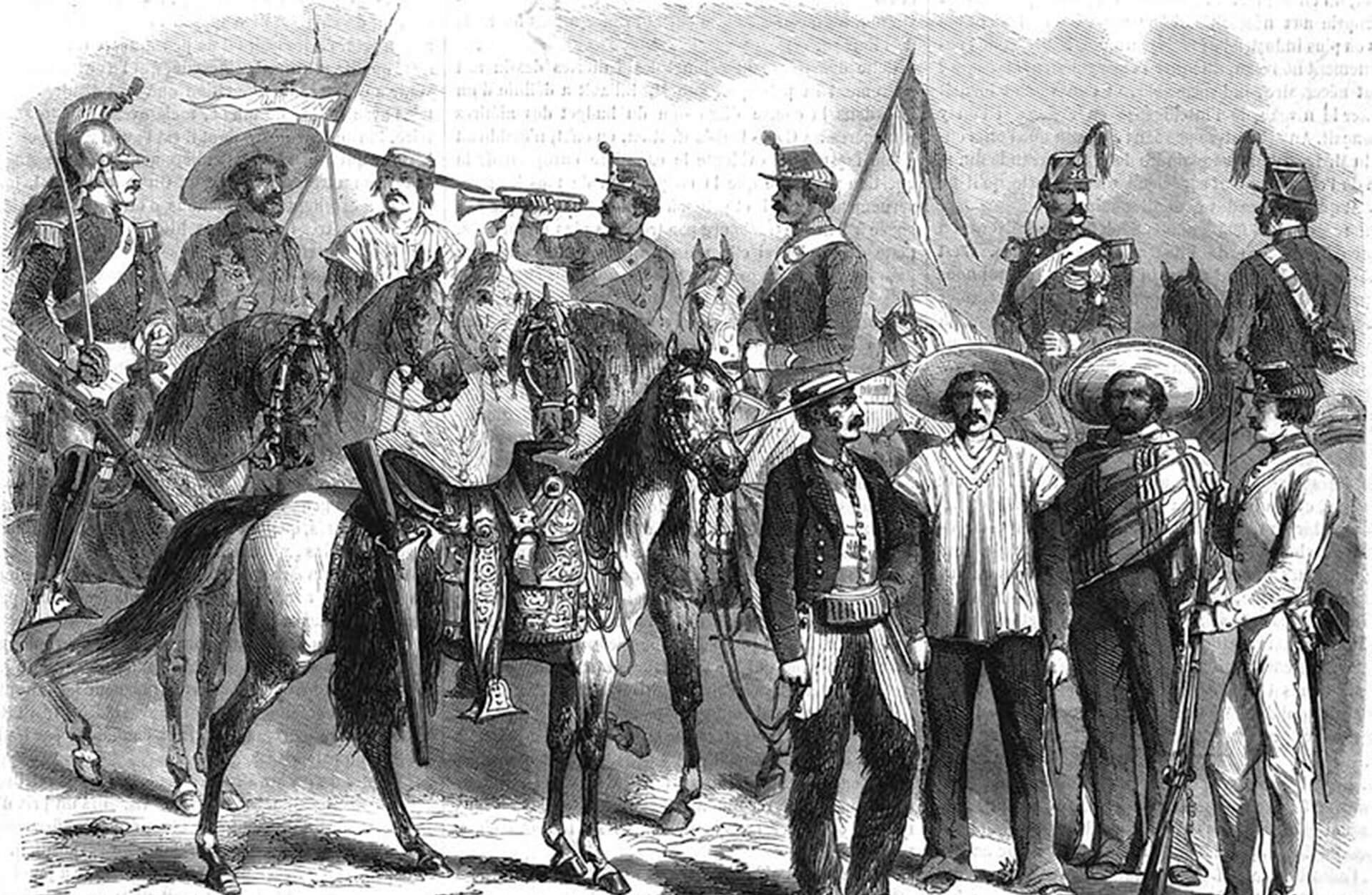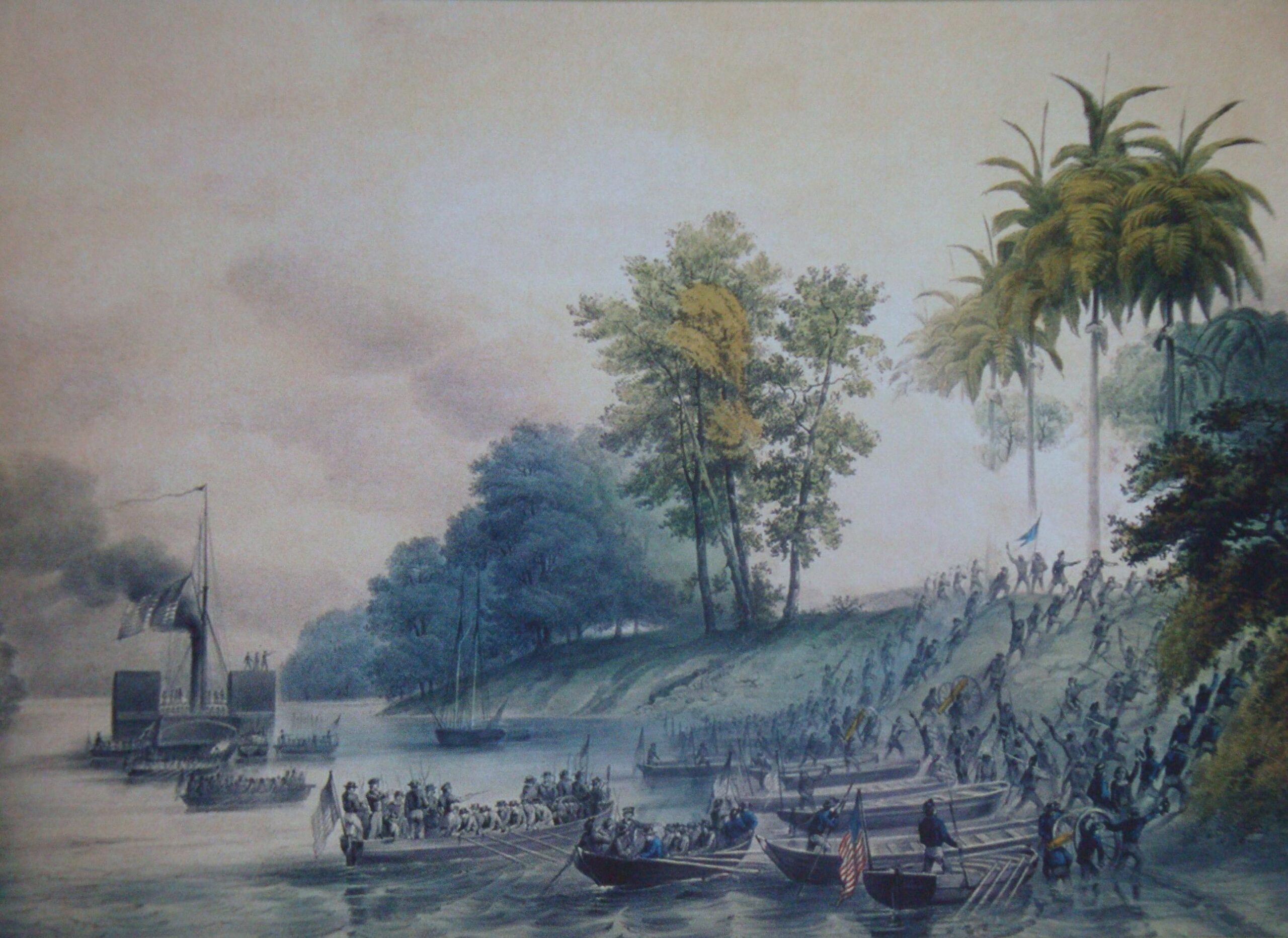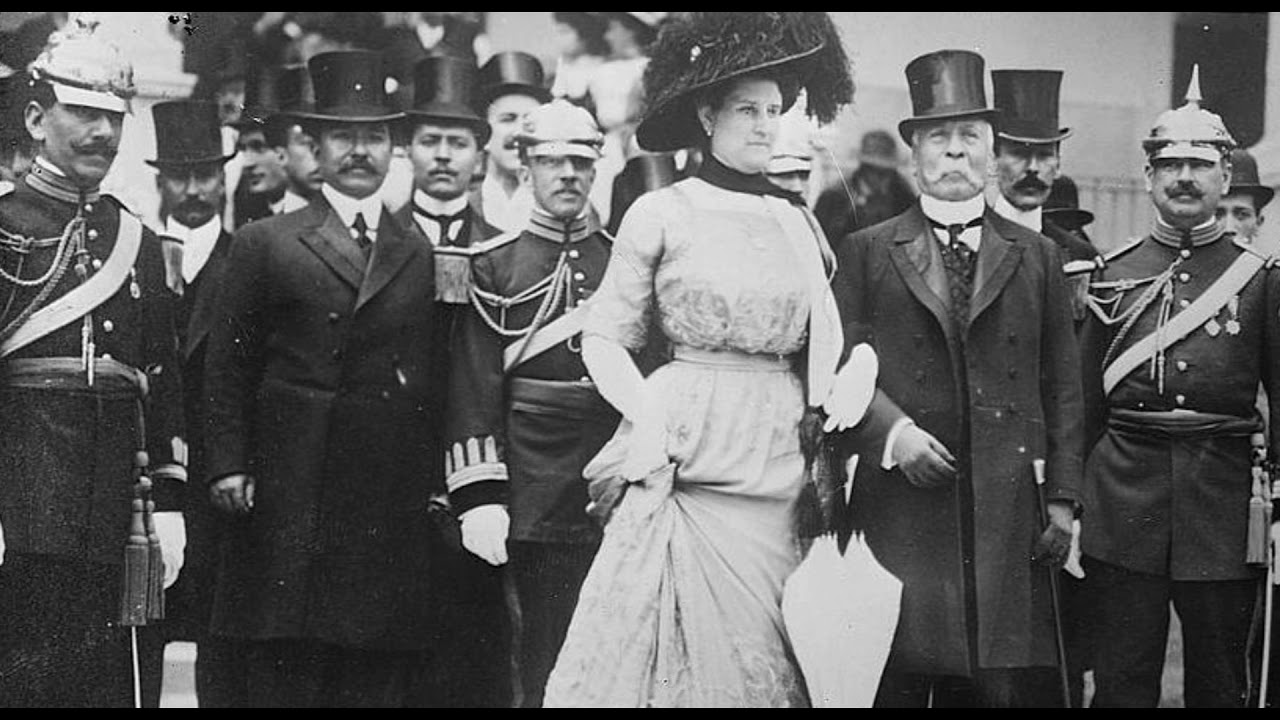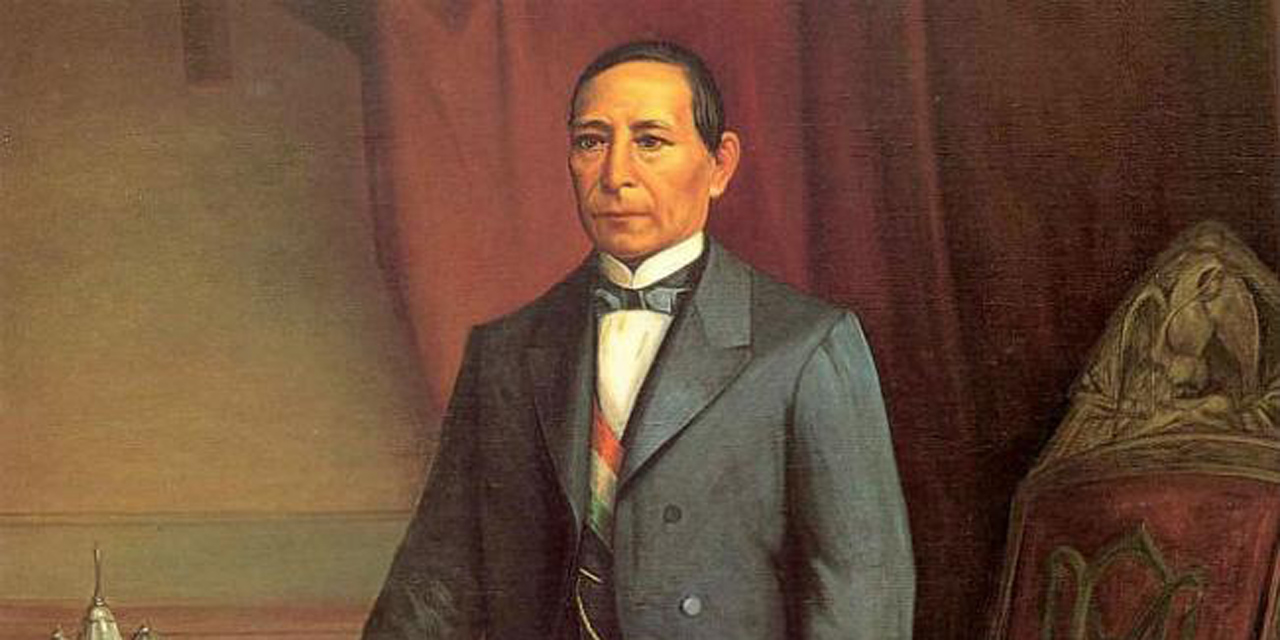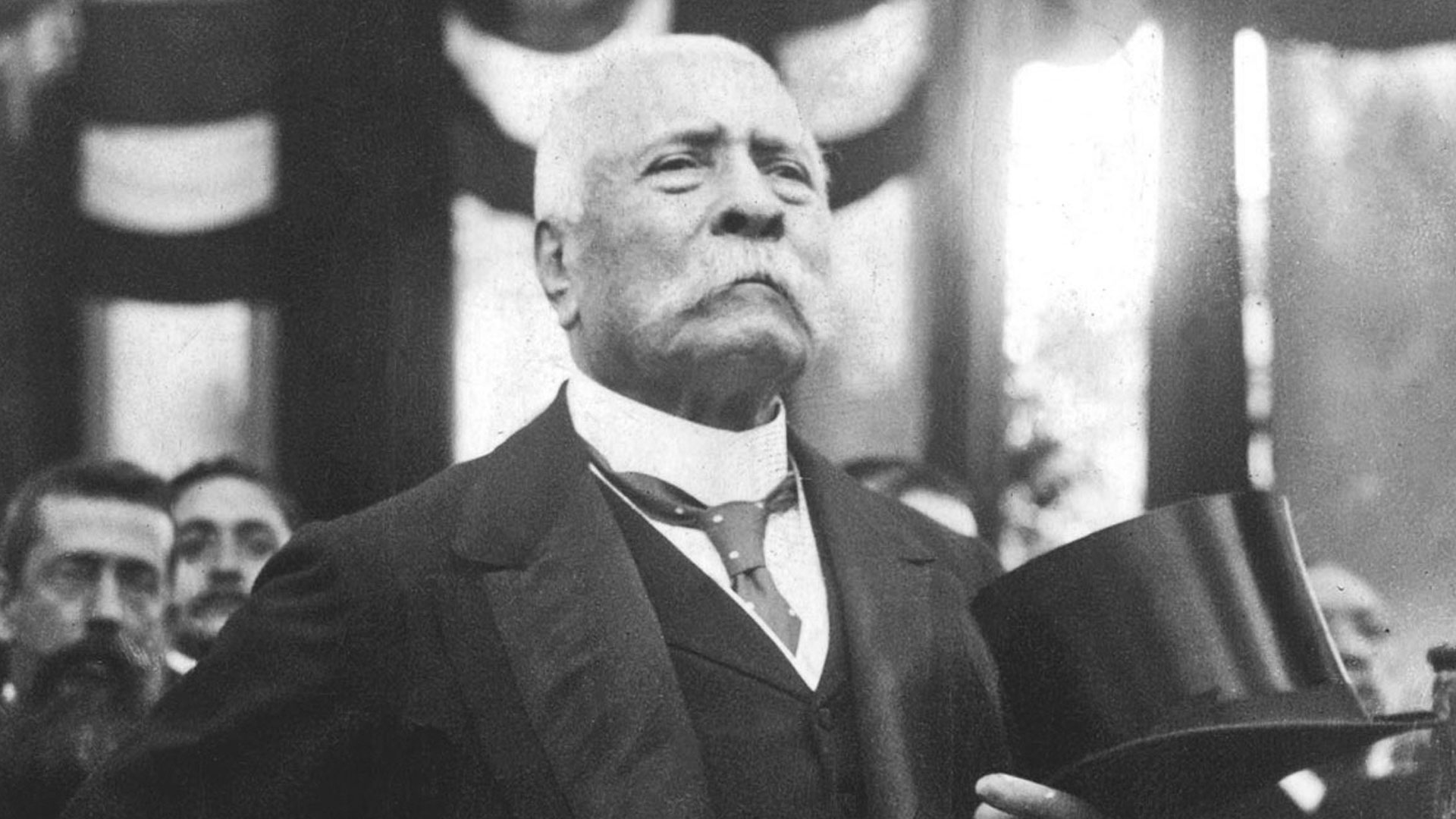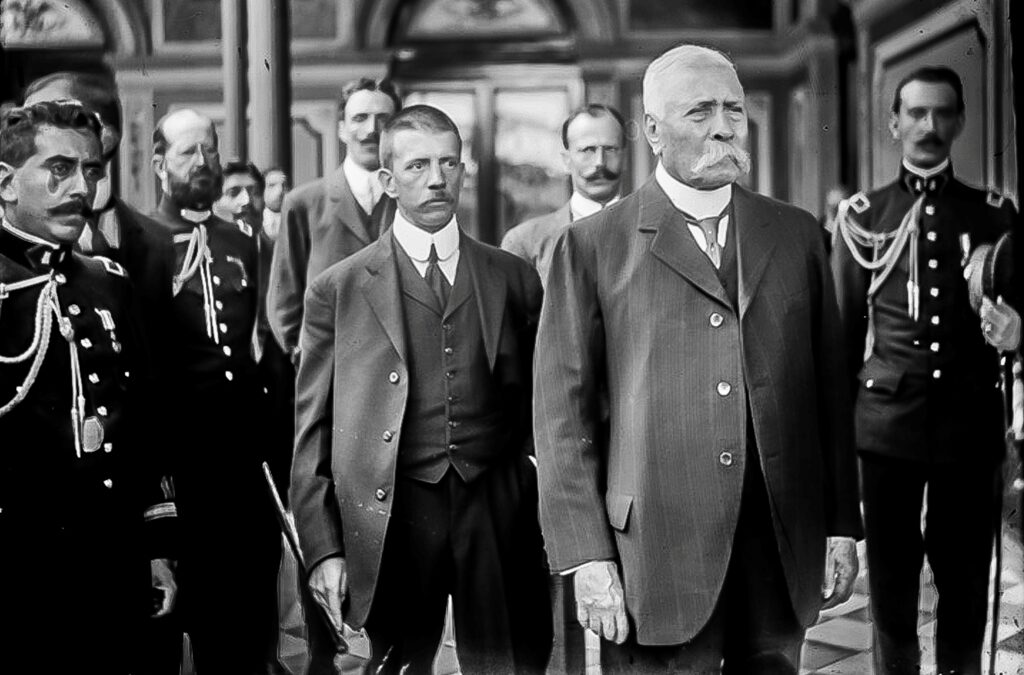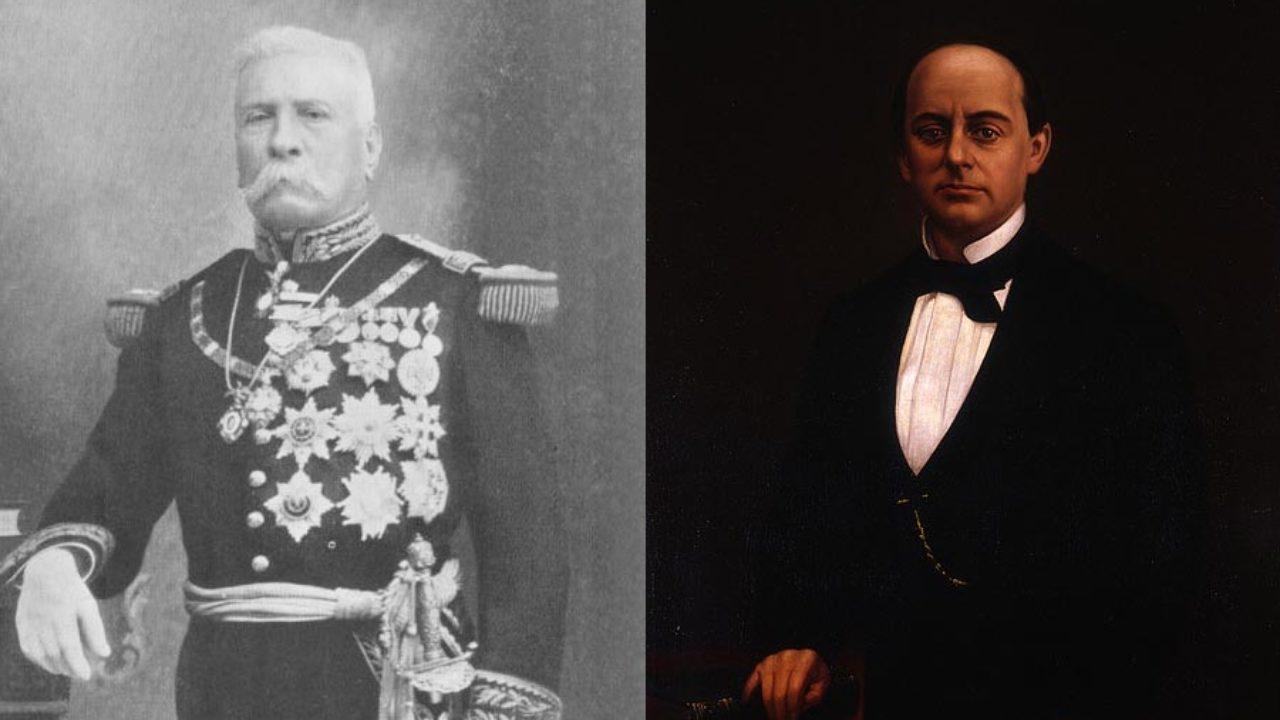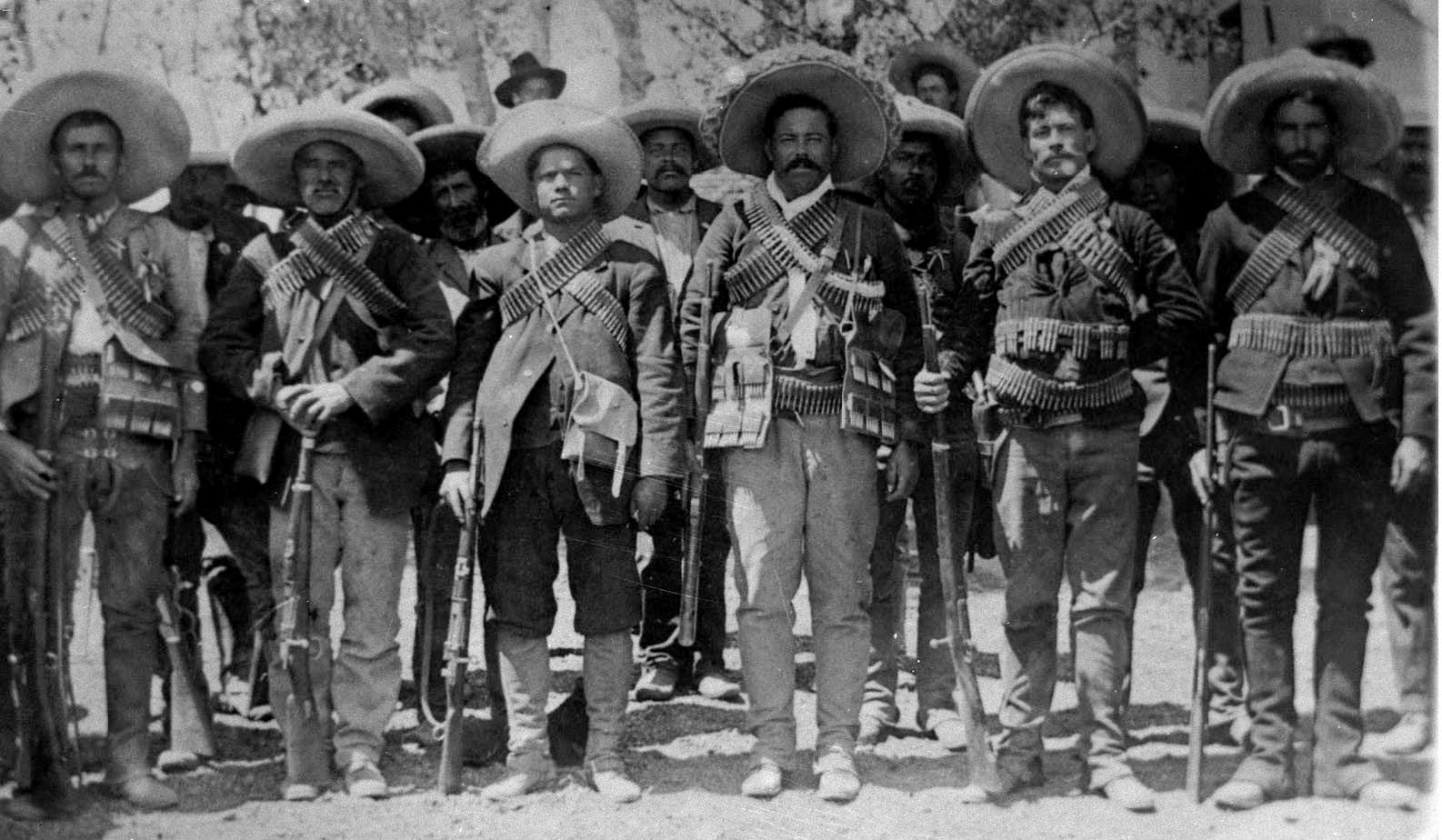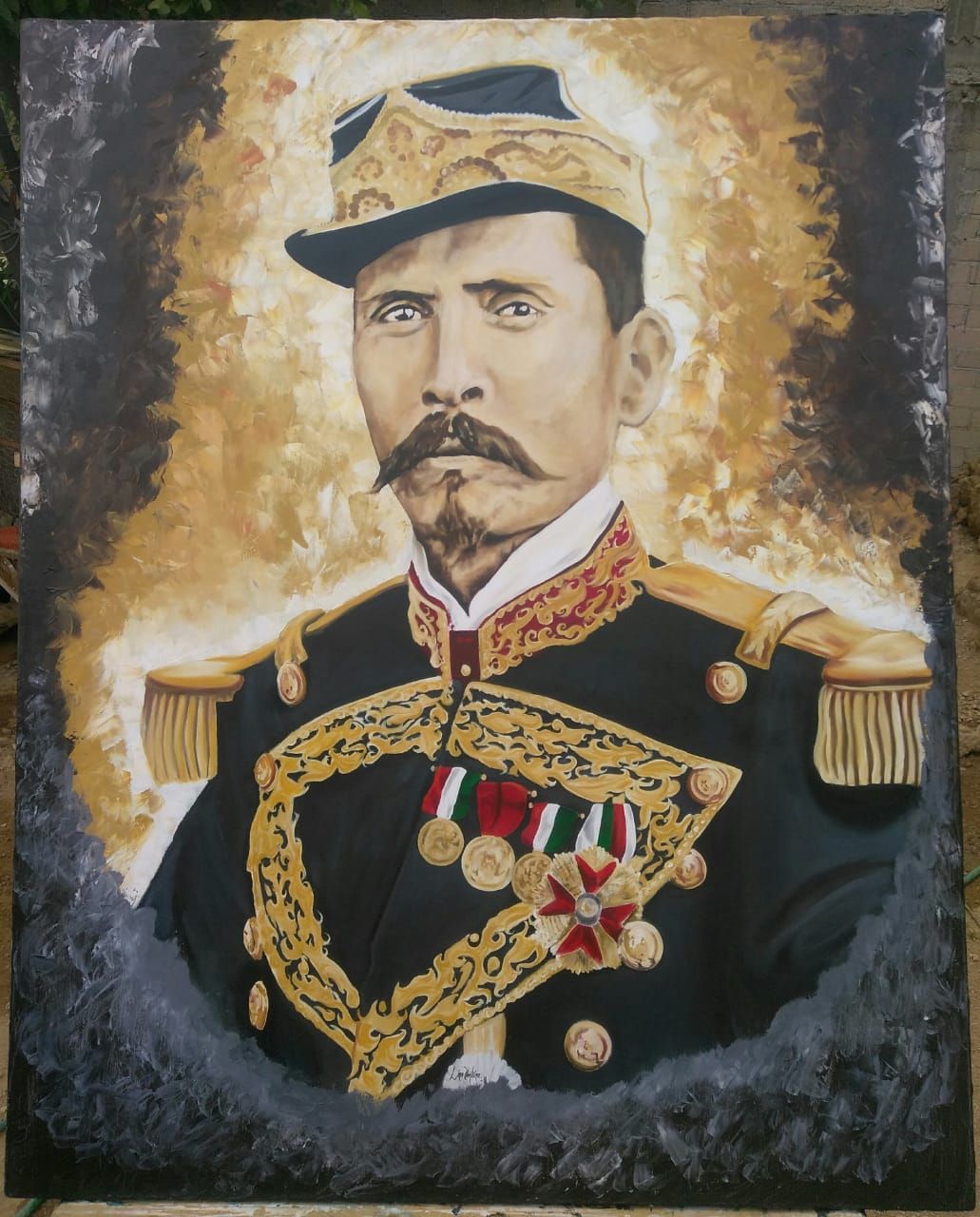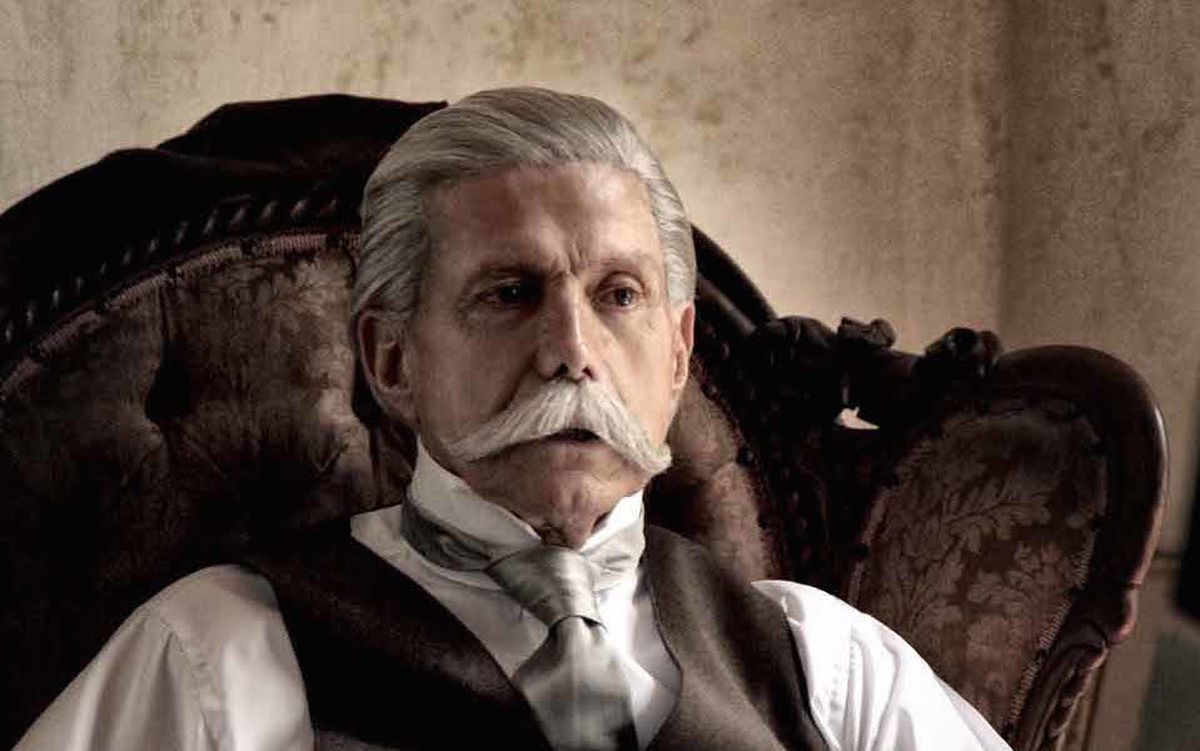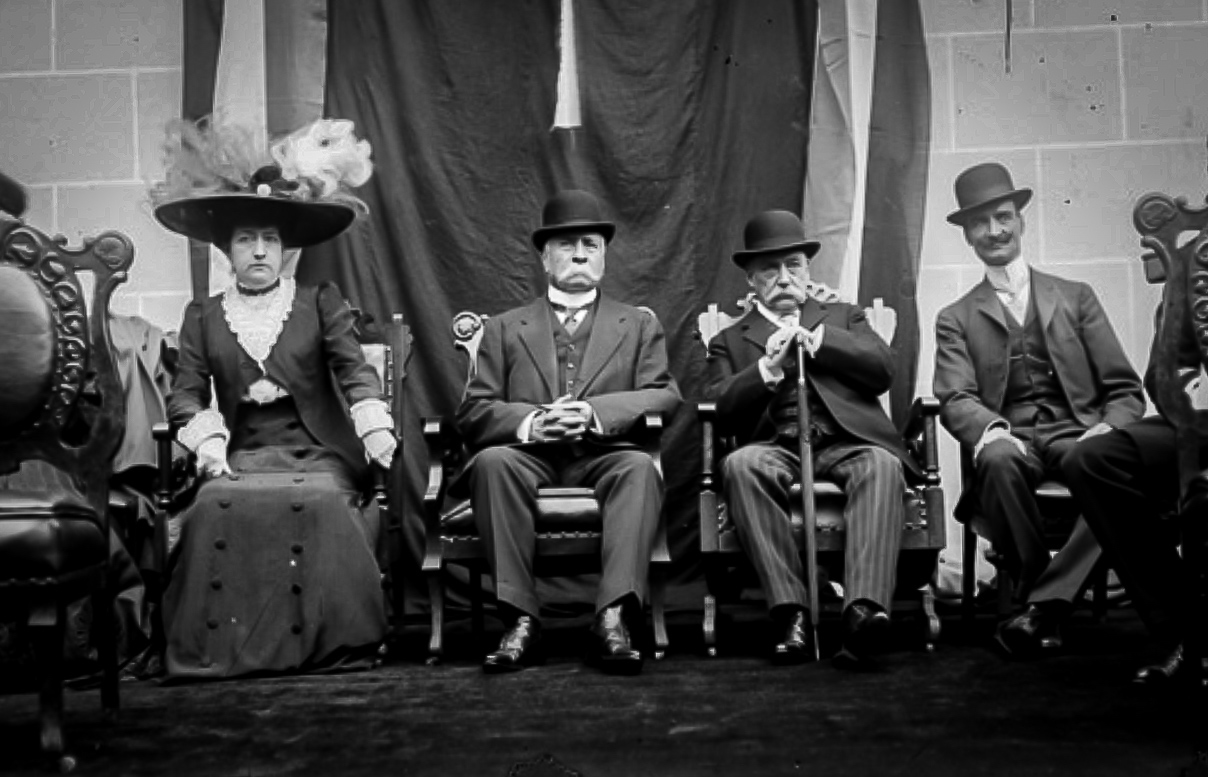José de la Cruz Porfirio Díaz Mori, developed as a Mexican military man who managed to develop under the position of President of the Republic.

Porfirio Diaz
Many wonderWho was Porfirio Diaz? This was a Mexican soldier and politician who was in the presidential power for thirty-one years, structured in seven periods. The times of his mandate were called by Mexican historians, the period of Porfiriato.
His first term as head of state took place after the victory established after the actions of the Tuxtepec Revolution. Battle that was executed between November 28 of the year 1876 to December 6 of that same year.
The second development of his government took place within the period from February 17, 1877 to May 5 of that same year. After that, he developed within the constitutional ranks for November 30, 1880, after establishing the regulations required for the constitution of the country.
After all these events, he took the presidential power of Mexico without any interruption from the year 1884 to 1911. It is important to mention that before developing as president he handled himself as a military man.
military aspects
Porfirio Díaz stood out as a soldier in battles such as the Second French Intervention in Mexico. On the other hand, he performed brilliantly in the Battle of Puebla, as well as the Siege of Puebla, the Battle of Miahuatlán and also the Battle of La Carbonera.
In turn, it is important to mention that on October 15, 1863, then President Benito Juárez decided to appoint Porfirio Díaz Division General. After this, on the 28th of that same month, military elements focused on the military mandate were carried out in the states of Veracruz, Oaxaca, Tlaxcala and Puebla.
It is important to highlight that among the characters that Porfirio Díaz highlighted, he did so through his military decisions in the battles waged within the state of Oaxaca. Among his good decisions, he traced guerrilla groups against the French, with the intention of putting an end to the attempts of domination by France.
By the beginning of April 1867, Porfirio Díaz decided to go to Puebla, so that after April 15 he would achieve victory and thus lead troops of republican rank to the capital city of Mexico.
Porfirio Díaz decides to execute arms uprisings against the federal government motivated by contrary ideals on two occasions. His first act with arms was against Benito Juárez, executing the Plan de la Noria. If you want you can learn a little more about articles like this with Ignatius Manuel Altamirano
These events led to a confrontation with Sebastián Lerdo de Tejada. It is after this that he elaborates the Tuxtepec Plan. This plan was successfully executed, which led Porfirio Díaz to develop as president of the territory of Mexico.
He described himself as a total defender of elements that lead to evolution and progress. Among the most important actions that he carried out while he remained in the position of head of state was the achievement of carrying out a progressive expansion of the railroad in Mexico.
Biography
La Biography of Porfirio Diaz indicates that he was born in Oaxaca, Mexico, in the previously named province of Antequera, on September 15, 1830. His baptism was performed by José Agustín Domínguez as godfather, the same day he was born.
It is important to mention that he was the sixth son of the union of José Faustino Díaz Orozco and María Petrona Cecilia Mori Cortés, a couple who joined in holy matrimony in 1808. It should be mentioned that the father of this important character in Mexican history was in the area of mines and metals.
In addition to this, José Faustino decides to join the insurgent troops led by Vicente Guerrero. It is in these military troops that Jóse Faustino developed as a veterinarian, for later, thanks to his work, being appointed colonel.
In 1819 the parents of Porfirio Díaz manage to conceive their first daughter who is called Desideria. After that, the twins Cayetano and Pablo are born, however, their lives are wrapped in misfortune after dying at an early age. Then two other girls named Manuela and Nicolasa are born. Porfirio was born in 1830 and finally his younger brother named Felipe Díaz Mori, who was born in 1833.
It is important to mention that in 1820 Porfirio's parents moved to the center of the city of Oaxaca. Here they decide to buy an inn that is close to a temple of the Virgen de la Soledad. It is known for hosting travelers passing through that city.
Finally, José Faustino Díaz is motivated to start a business dedicated to blacksmithing. This allowed the family to have a favorable economic situation for a few years.
cholera morbus epidemic
In the summer of 1833, an epidemic of cholera morbus unfolded in the city of Oaxaca. It is for this reason that at the beginning of August José Faustino Díaz was infected by the disease and decided by the end of the same month to make his will. The property was given in its entirety to his wife.
After the misfortune, the family could not support themselves in the inn so they decided to move to Solar del Toronjo. Faced with the situation experienced in those times, some of the memorable phrases of Porfirio Díaz, inspired by her memoirs “Her good judgment and her duties as a mother provided her with a way to prolong those meager resources for a long time”
On the other hand, the girls Díaz Mori, Manuela, Desideria and Nicolasa, decided to start with activities of weaving, sewing and making food and desserts, with the purpose of selling them in order to maintain a stable economy within the family nucleus.
The matriarch, in turn, proceeds to sow nopales with the intention of producing them to sell them after the result. She, in turn, started raising pigs, after training one of the patios of her home to carry out this activity.
First years of study
It was in 1835 when Porfirio Díaz entered the Friendly School. This educational structure was within the control ranges of the state of Oaxaca. It is here where the character managed to learn to read and in turn to write.
According to his biography, it is said that as a boy he spent most of his time playing and spending time with the friends and neighbors he had in Solar del Toronjo. On the other hand, according to accounts, at a time in the midst of an anger between brothers, he decides to put gunpowder on Felix's nose, while he was resting, thus setting him on fire. This caused them to call Félix el chato Díaz.
Seminar
Porfirio's godfather was called José Agustín Domínguez y Díaz, a subject who developed as a priest and later as Bishop of Antequera. He recommends that Porfirio's mother enter him into a seminary.
Therefore, by 1843 the character entered the Tridentine Seminary of Oaxaca, developing within the range of a bachelor's degree in arts. This process took place over a period of three years. It is for this reason that by 1846, Porfirio learned about the study of physics, mathematics, logic, grammar, Latin, and rhetoric.
He also had good grades, especially in Latin classes. It is for this reason that he proceeds to offer classes in this language to Guadalupe Pérez, who was the son of Mr. Marcos Pérez, with the intention of solving family economic difficulties.
The interventions by the United States towards the Mexican territory, brought with it a certain uprising and rebellion on the part of the members of the seminars. The one from Oaxaca was not far behind with these actions, which is why its members began to be motivated by the fight against these invaders.
For this reason, they began with revolutionary ideas that were supported by both the priests and the teachers who worked within the institution. It is for this reason, that in October of the year of the invading movements of the Americans, a group of students decides to meet with the governor of the State, with the intention of requesting that they be granted entry into the national army forces. It is important to mention that Porfirio Díaz was part of that group.
This group of boys was located within the San Clemente Battalion. Despite all these actions, the war ended shortly after and none of the members of the group managed to function within the war.
latin classes
Porfirio Díaz worked as a Latin tutor with Guadalupe Pérez, who was the son of the important lawyer Marcos Pérez, a character with great relations with Benito Juárez.
It should be mentioned that one day after finishing classes with Guadalupe, his father, decides to invite Porfirio to participate with them in an awards ceremony that took place at the Liberal College.
After accepting the tutor of the little Pérez, he meets the governor of the state at that time, who was Benito Juárez. There the boy observes how characters such as Marcos Pérez and Benito Juárez unfold and in addition to that, he proceeds to listen to words that express knowledge that is not obtained within the seminar. This is why, after this event, he decides to put aside the seminar.
Institute of Sciences and Arts of Oaxaca
Porfirio is motivated after his actions to enter the Institute of Sciences and Arts of Oaxaca, by the time the young man decides to enter the institute, the place was known for supposedly having elements of heresy. For this reason, his godfather, who was already working as a bishop, decides to withdraw the financial support he gave him, as well as the emotional one.
Despite his new situation, Porfirio Díaz manages to evolve within his studies in the area of law. What led him to obtain at the end of the year 1850 the title of teacher within the Institute of Sciences and Arts of Oaxaca.
On the other hand, the economic situation in which his family was found led Porfirio to become a bolero. He later decides to work in an armory where he works under the trade of fixing rifles and after that he becomes a carpenter.
For 1854 he proceeds to replace Rafael Urquiza within the work of librarian of the Institute of Sciences and Arts of Oaxaca. All these activities were intended to improve the economic situation of his family.
It is important to mention that after Manuel Iturribarrí left the chair of natural law due to illness, it was Porfirio Díaz who replaced him. This new position considerably improves the economic situation of his family and in turn takes him to a new stage in his professional life.
Development in studies
It should be mentioned that this character developed with great skill in Roman law. Which led him to be the student with the best grades in his generation.
Among the companions with whom he was related were Matías Romero and José Justo Benítez. On the other hand, he was a student of Benito Juárez in civil law from 1852 to 1853.
life of his sisters
When her father dies, Porfirio's sister, Desideria, decides to marry Antonio Tapia, who works as a merchant within the territory of Michoacán. It is with this man that she has several children. However, of these only two manage to survive. The woman herself lived in Michoacán until the time of her death.
For her part, Nicolasa decides to get married at a very young age and in turn becomes a widow shortly after getting married. It is after these events that she does not leave any kind of offspring.
Manuela, on the other hand, developed an extramarital relationship with a doctor named Manuel Ortega Reyes. It is after this that Delfina Ortega Díaz is born, who as the years go by becomes the wife of her uncle Porfirio de ella.
Military career
On March 1854, 1853, in the current state of Guerrero, Florencio Villareal and Juan N. Álvarez decided to externalize the Plan of Ayutla, which sought to end the presidential development of Antonio López de Santa Anna. Political character who was exercising the presidency for the eleventh time, since April XNUMX.
It is through this publication that the so-called Ayutla Revolution begins. It should be mentioned that the one who orchestrated the greatest movement in Oaxaca was Marcos Pérez, together with his most important companions of ideals. That is why, among all of them, they begin to draw up a plan with the intention of collaborating with the revolutionary movement.
After this, they proceed to have contacts directly related to characters of Mexican origin who were in the American city of New Orleans under the rank of exiles. Among these was the case at that time of Benito Juárez, who had moved to the area due to disputes with Santa Anna.
However, this brings with it the imprisonment of Marcos Pérez and other members who communicated through letters with the exiles, since the government's secret police manage to discover their actions.
Porfirio Díaz in his revolutionary search tries to visit Pérez, however, it is not so easy for him due to the restrictions imposed by the government against these prisoners.
Despite this, Porfirio does not give up, so he manages to climb the towers of the convent with the collaboration of his brother one night in November. This leads him to communicate with Pérez through the Latin language.
After this situation, amnesty is granted to the prisons and therefore Porfirio decides to inform Pérez of the decision. By December of that same year, Pérez was exiled by the governor and, in turn, an arrest warrant was issued for Porfirio Díaz, since he himself decided to vote publicly against Santa Anna, thus supporting Álvarez.
Juan Álvarez at that time, decides to structure a guerrilla group, with the intention of confronting the federal troops in the territory of Teotongo by February of the year d 1855. Be sure to inform yourself with articles such as Biography of Guadalupe Victoria
Santa Anna's resignation
For August 9, 1855, Santa Anna, decides to resign his position as president, after events raised against him. That is why he embarks in the port of Veracruz to Cuba.
It is Juan N. Álvarez who becomes president of the Mexican territory, since he is the one who led the revolutionary movements against Santa Anna. On August 27 of that same year, Benito Juárez returns, after spending a few years in exile in the United States. After that, Benito Juárez is appointed governor of Oaxaca.
On the other hand, Celestino Macedonio, worked as secretary of the State government. It is for this reason that the attribution of appointing Porfirio Díaz as the political chief in charge of the District of Ixtlán was taken.
Díaz manages to make the first guard within this area, despite having several characters against him, as was the case of the state military chief. It is together with these new troops that Díaz participates in Oaxaca in a battle in the year 1856. In this historical event he is wounded by a bullet and after this Esteban Calderón proceeds to operate on him.
Award for your services
Porfirio Díaz was awarded for the liberal actions he carried out while he remained in his military service. The person who gave him this recognition was President Ignacio Comonfort. On the other hand, it was he who handed over the military leadership of the Isthmus of Tehuantepec, which was located in Santo Domingo Tehuantepec.
After this event, a conservative rebellion arose, so Porfirio Díaz decided to take command of Jamiltepec, which is in the territory of Ixcapa. It is thanks to this action that the events orchestrated by the conservatives were kept at bay.
It should be mentioned that in the territory of Tehuantepec, it is that Díaz gets to know Mauricio López, who operates under liberal aspects. In addition to this, he had the opportunity to get along with the local post office manager, who was known as Juan Calvo. As well as Juan A. Avendaño, who worked in the area as a judge and merchant, and Charles Etienne Brasseur, who was a Frenchman who was traveling through the territory.
On the other hand, Díaz for the time, developed a connection with the elements of the Zapotec culture and in turn the Mixtec culture. It is also important to mention that he was motivated to learn more about the Mixtecs every day because his mother was a descendant of these aborigines.
In turn, he had the opportunity to share with Juana C. Romero, an important woman who descended from an outstanding family of politicians. Likewise, while the Porfiriato was developing, the man decided to be part of the outstanding aspects of the Isthmus.
It should be noted that it was in 1860 that Porfirio Díaz left the territory of Oaxaca for the first time. Demonstrating in other areas of the country according to testimonies such as that of Brasseur, that he was a man of high distinction, since he had traits of nobility. Without leaving aside, elements typical of the Mexican.
For many, Díaz had a certain halo of the aristocracy. At the same time, his good character and ingenuity stood out when making decisions related to the evolution of his country. It is through this that he began to be called the man of Oaxaca.
reform war
At the time when the Reform War began, Porfirio Díaz was part of the troops led by José María Díaz Ordaz and Ignacio Mejía in the battles carried out in Calpulalpan.
It is appropriate to point out that after his great development, he was awarded the positions of colonel and lieutenant general in just three years. Finally, after the liberal triumph that was formalized on January 11, 1861, Porfirio decided to run for federal deputy, from the state in which he was born. This obtains the triumph in the parliament, under the representation of Oaxaca, in the so-called Congress of the Union.
Despite this victory, Díaz decides to stay away from his position for a time with the intention of joining the battle ranks, after the execution orchestrated by the conservatives against Melchor Ocampo, Santos Degollado and Leandro Valle, who took his place while he was Absent from his position was Justo Benítez.
Convention in London
On October 31, 1861, a meeting was held in London where representatives of Spain, France and England were involved. All these countries had a common goal that was directly related to obtaining a method to force Mexico to pay its debts.
This situation was generated after the suspension of payments made by Benito Juárez, since the country was bankrupt. What motivated the French, Spanish and English to go to Mexican soil from the coasts of Veracruz, Orizaba and Córdoba.
These foreign military troops were led by Juan Prim, Dubois de Saligny and John Russell. However, thanks to Manuel Doblado, who at that time was serving as Minister of Foreign Affairs, the troops of Spanish and English origin withdrew, since the Treaties of La Soledad came to light.
Despite the negotiations, nothing was agreed with the French troops, so they decided to stay within Mexican territory. It is for the beginning of March 1862 that they proceed to establish themselves in the interior of the country. These had around 5000 soldiers, who were commanded by Charles Ferdinand Latrille, who held the title of Count of Lorencez.
It is at the end of April of that year that the French troops settled in Las Flores, an area that made up the territory of Veracruz. After these events, Benito Juárez decides to indicate to Ignacio Zaragoza, that he be part of the liberating army that finally activates in the War of Reform, with the intention of ending the French forces that settled in Puebla.
By the beginning of May, Porfirio Díaz, in alliance with other soldiers, decides to provide support against the French in the Battle of Puebla. It is after this that victory is achieved, which leads the enemy troops to retreat to Orizaba.
It should be mentioned that Díaz had the task of defending the left zone of the city. Where he constantly resisted attacks orchestrated by French forces. On the other hand, after the defeat and flight, it is Porfirio Díaz and González Ortega, who dedicate themselves to the task of chasing the invading troops, with the intention of completely destroying them.
However, Zaragoza decides to curb their actions, leading the French to successfully escape. After this action by Zaragoza, the soldier decides to send him a letter to Juárez, with the intention of informing him of everything that happened in battle. In it, he prominently pointed out all the feats carried out by Porfirio Díaz.
Death of Saragossa
At the beginning of September, Zaragoza died in the territory of Puebla. On the other hand, at the beginning of the year 1863, the Emperor of France Napoleon III decided to send more troops to Mexico, with the intention of achieving complete victory and thus developing a European geopolitical process again in the American continent.
Federico Forey was the leader of the troops that were in Puebla since April 1863. On the other hand, it was Jesús González Ortega who proceeded to defend the plaza with his troops. It should be noted that he obtained the collaboration of Miguel Negrete and Felipe Berriozábal y Díaz.
All of this led to a few battles with unsuccessful results for both sides of the game. However, after much waiting, the French gain control by mid-May. It is for this reason that Porfirio Díaz decided to destroy all the weapons and documents so that the French would not seize them.
At the moment in which the French manage to pass the fortresses where the Mexican troops are sheltered, all the soldiers who were part of the republican ideals were taken as prisoners of the French crown.
Capture and detention
Porfirio Diaz. Together with other participants of the military battle troops, they were captured and in turn held inside the Convent of Santa Inés, which was located in Puebla. After the recruitment, the military prisoners were sent to Veracruz. This is where they would be taken to Martinique.
However, thanks to their remarkable cunning, both Berriozábal and Díaz manage to flee to the capital of Mexican territory. While this was happening, an escape process was taking place on the part of Juárez and his most loyal members of the cabinet. This was due to the fact that the invading troops of Juan Nepomuceno Almonte were after them with the collaboration of the French army.
All this leads Díaz to communicate with Juárez at the end of May, in this conversation the question asked by the president stands out, related to how willing Díaz was to fight for the freedom of his country.
Given this, Porfirio indicates that he must organize and deploy a battalion to level with the French forces and their conservative allies. It is through this, and under the influence of Sebastián Lerdo de Tejada, that the president gives Díaz 30000 members of his most trusted military troops.
Together with these troops Díaz decides to go towards the territory of Oaxaca. In addition to this, he is listed as interim governor. In the month of June he arrives in Oaxaca with Manuel González and his brother Felipe. It is important to mention that González had fled from the Conservatives after Comnfort's death.
Battles between guerrillas
In the course of the year 1864, numerous battles between guerrillas led by Díaz and González took place. This allowed Oaxaca to never be dominated by the French.
Despite this personal victory of the state, the situation was worrying, since the conservatives were gaining more ground every day after so many victories in battle. It is for this reason that Juárez decides to leave Monterrey to head towards Paso Norte. Read a little more about articles like Children heroes
As these events arose, a group of troops together with clerics with conservative ideals decided to move to Vienna, Austria, with the intention of handing over the crown of the Empire of Mexico to Archduke Maximilian of Habsburg together with his wife Carlota in October 1863.
The decision to hand over power to Maximilian was generated after a discussion between political figures and in turn members of high society in Mexico, where the archduke was the best prospect to function as emperor. It is then that the new Empire of Mexico is established for June 10, 1864.
Oaxaca Fortification
For the beginning of February of the year 1865, Porfirio Díaz proceeds to make elements that manage to strengthen the situation in which Oaxaca finds itself. All this in search of reducing the troops led by Aquiles Bazaine who were just a few steps away from taking Antequera.
Bazaine begins his process of establishing himself in the territory of Oaxaca in mid-February and after several situations in which he proceeds to battle for territory, Díaz decides to surrender in mid-June.
Given this, Bazaine orders that Díaz should be shot, but Justo Benítez manages to convince him that it was unnecessary to end his life. It is after this that they take him to the prison that was located in the Carmelite Convent, in the territory of Puebla.
Despite these dark moments in his life, it is there where Díaz manages to establish crumbs with the Hungarian baron Louis de Salignac, since he was the one who was dedicated to controlling the prison.
On the other hand, Díaz tries to escape with a knife and rope one day when the military commander was not inside the prison facilities. Faced with this situation, the baron discovers him but due to his friendship he proceeds to remain silent and let him escape.
While this was happening, a group of men was deployed with the intention of going out to combat. In addition, before carrying out any action, they proceeded to inform Juárez by means of a letter of the actions that would be taken.
Army of the East
Díaz carries out recruitment activities for a year and a half and after achieving his goal, he decides to return to the south of the Mexican territory. It is in this area where he received help from the cacique with liberal ideals Juan Álvarez.
After this, he decides to structure the Army of the East, with which he achieved his victory on October 3, 1866, in the so-called Battle of Miahuatlán. Later on October 18 of the same year, success by Díaz's troops occurred in the Battle of La Carbonera.
Porfirio Díaz decides to attack the city of Oaxaca, after preparing his troops for two months. He manages to take control of the city of Oaxaca on the night of December 27. So he decides to choose a governor to be in charge of the political, economic and military decisions of the state.
On the other hand, by taking control of Oaxaca, Díaz proceeded to dismiss and in certain cases also execute characters that made up the French military forces. Likewise, the archbishop of Oaxaca decides to declare himself against the republican political movements, for which Díaz proceeds to execute him, with the intention of dispelling any type of rebellion. Juan de Dios Borja, is the one who has been acting as governor since 1867.
French withdrawal
After all the events that led to Napoleon III's failure, he decides to withdraw his troops at the beginning of February 1867. So Bazaine asks for the withdrawal of his men. It is important to mention that the press played an important role in the actions taken by the emperor of France, since they generated a diversity of opinions that affected in a certain way the parliamentary actions of France.
For what was tried with this action to dissipate certain elements typical of the Prussians who in the future would be the protagonists that would lead to the Franco-Pursian War in French territory.
Fall of the Mexican Empire
The measures taken by Emperor Napoleon III brought with them the beginning of the fall of the Empire of Mexico. Among the reasons related to this situation is that the emperor, without French support, had only 500 men in his military troops.
After this, it was decided to carry out the liberal movements, where Maximilian had conservatives such as Miguel Miramón and Tomás Mejía, who proceeded with their small troops to go to Querétaro, where they were received by Mariano Escobedo, who was defeated on May 15. from 1867.
While this was happening, Charlotte of Belgium, Maximilian's wife, proceeded to go to Paris and Rome, with the intention of speaking with Napoleon III, Francisco José I, Pope Pius IX and Eugenia de Montijo, in search of support in order to keep the empire.
In the conversations she did not achieve what was expected, so she did not receive support for her husband. All this led her to suffer an attack of madness in Rome, so her family decides to confine her in the castle of Brussels, where she died on January 19, 1927, at the age of 87.
By March 1867, Díaz began the process of recovering the territory of Puebla. These actions were carried out for three weeks, which brought with it the preparation required to put an end to the troops commanded by Leonardo Márquez, a character who decided to move to Toluca after his defeat.
It was on April 2, 1867, when the final assault on Puebla was carried out by Porfirio Díaz. Therefore, Puebla ceased to be the southern city that was under French control. After this, all that remained was to end French control in Queretaro and the Mexican capital city.
fortified forces
While Porfirio Díaz was on his way to Toluca, Márquez, who was in control of the territory, trained around 700 men. By mid-April, the troops led by Gonzalo Montes de Oca proceeded to carry out a confrontation with Márquez.
The victorious in the attack were the troops that were fighting for the liberation of Mexico. Therefore, Márquez decides to go to Cuba, where he settles until his death in 1913. History calls this the Battle of the Lomas de San Lorenzo.
With this victory, the only thing left was to put an end to the remaining power of the French. As the ideal situation for the attack developed, Porfirio Díaz decides to prohibit any type of attack, looting or robbery. Given this, two men from his troop decided to disobey, for which they were punished by being shot.
Maximiliano, on the other hand, proceeds to hand over the power of the Querétaro plaza to Mariano Escobedo, after being cornered, which brought him to prison along with Mejías and Miramón.
All these characters were shot after breaking international and national laws and the Treaty of Soledad. It is important to mention that there were many who asked for the emperor's forgiveness and his two other followers of his. However, Benito Juárez decided not to show mercy.
It should be mentioned that according to records, the Mexican people were made to believe that Maximiliano had not died, creating the theory that he would return to the capital to fight for his governmental rights. However, Porfirio Díaz decides to publish his death, with the aim of putting an end to these baseless rumors.
Juarez Recognition
Benito Juárez after all the attitudes carried out by Porfirio Díaz decides to issue in a letter addressed to Guillermo Prieto, the potential that the young Díaz possessed, highlighting the development that his stay in a position of power could generate.
In addition to this, in a speech made on July 15, Benito Juárez proceeded to recognize the qualities of Porfirio Díaz in public. He in turn gave him an award recognizing the skills and triumphs made by the troops of Oaxaca.
Likewise, the Hacienda de La Noria was granted, where the Plan de La Noria would later be carried out. On the other hand, Diaz's brother, Felipe, due to his great abilities, is named governor of Oaxaca. This was done through popular vote. In turn, Porfirio decides to move back to the territory of Oaxaca.
Love relationships
While he was in times of war, Porfirio Díaz had some romantic relationships. Among the most outstanding is the love affair that he had for a few years with Juana Catalina Romero. A woman who, in addition to helping him with the elements of the Reform War, gave him emotional support.
It is important to mention that the relationship lasted after the war. It is even believed that at the time when he was under threat of death he was on his way to the home of his lover.
Similarly, according to historical records, Díaz also had a relationship with Rafaela Quiñones, who was a soldier in the war of intervention. It is after this love affair that a daughter named Amanda Díaz was born in 1867, who stayed with Porfirio until 1879.
On the other hand, on April 15, 1867, Porfirio Díaz proceeded to marry his niece Delfina Ortega de Díaz, after being forgiven by Benito Juárez for the union between a couple with genetic kinship.
After that, the first son of the couple was born in 1869, the boy was named Porfirio Germán, however he died a few months after being born. After two years they manage to procreate twins, but these, like their first child, die shortly after birth.
In 1873, Porfirio Díaz Ortega was born, who was the first son to live to adulthood. On the other hand, by May 1875 Luz Victoria was born, who has that name after the victory achieved in Puebla.
Elections of 1867 and later years
Later, when the war with the French battalions ends. Benito Juárez, under the support of article 128 of the Constitution made for 1857, manages to declare himself president. For this reason, presidential elections are held for Sunday, August 25, 1867.
The most important candidate was Benito Juárez. The one who confronted him at the electoral polls was Porfirio Díaz. It is important to mention that the government that Porfirio Diaz offered was based on elements of development for the country. The results of the two candidates of the elections were as follows:
- Benito Juarez 2344 votes.
- Porfirio Diaz 785 votes.
After the results, the Congress that was represented by Manuel Romero Rubio as president of the body, proceeds to publicly declare Benito Juárez as president of the Mexican Republic in a constitutional manner.
Juarez's period from then on began on December 1, 1867 and ended on November 30, 1871. These actions were placed in the streets of the capital city from September 23 of the year of the election. With the intention of making clear to the people the events that were taking place.
Diaz's defeat
At the moment in which the results are reported, Porfirio Díaz feels totally depressed after the defeat and victory of Juárez in the presidential elections. It is for this reason that he proceeds to go to his hacienda La Noria.
It is in this place that at the beginning of February 1868 he is informed of the cessation of the Army of the East, which by July of the previous year had been reduced to 4000 men within the troop development.
In turn, Benito Juárez through Matías Romero, who was working at that time as Minister of the Interior, offered Porfirio Díaz the presidential position of the Mexican legation in Washington DC, for his remarkable exploits. However, despite being a highly outstanding position, Díaz prefers not to accept the proposal.
Development of your life
From 1869 to 1870, Porfirio Díaz decides to live in his hacienda La Noria, together with his wife Delfina, in search of a bit of tranquility. Under this period of his life, the three children who die shortly after being born are procreated.
Faced with this painful situation, his wife Delfina believes that the events are related to religious aspects. This is because her marital union occurred despite having a relationship of blood relatives.
On the other hand, while this was happening, La Noria was the main place in which Porfirio Díaz started with a foundation aimed at tasks related to cannons, gunpowder and ammunition. Similarly, Diaz managed, elements of agriculture.
Likewise, his brother Félix Díaz Mori at that time became the governor of Oaxaca. While he remained as governor, he was affected by some discussions and, in turn, certain confrontations, due to taxes on wood, with regents from Juchitán.
By mid-February 1870, the governor along with his troops, made up of five hundred men, enter the city and begin with the murder of people of all ranks, gender and age, including innocent women and children. These actions were carried out with the intention of dispelling any type of insurrection.
Before leaving the place, the governor decides to enter the local church with the intention of looting it. That is why he ordered to lower the statue of the patron saint of Juchitán, seeking to make clear the control he had over the town.
Time later Díaz Mori decides to send the destroyed pieces to the town. These actions caused that by March 1872, a plan was executed that would result in the capture of the governor. After this, they proceed to castrate him to finally execute him. The actions were carried out with the intention of making it clear that he should pay for the actions carried out in Juchitán.
The Ferris wheel revolution
By 1871, Porfirio Díaz decides to run again in the presidential elections. It is important to mention that Benito Juárez was running for the third time.
On the other hand, Sebastián Lerdo de Tejada was also an electoral opponent, who at that time was acting as president of the Supreme Court of Justice of the country.
These presidential elections were held on August 27, 1871. However, the results were published for October of that year, once again giving Juarez the victory. The concrete results will be seen below:
- Benito Juárez with 5837 votes.
- Porfirio Díaz had 3555 votes.
- While Sebastián Lerdo de Tejada obtained 2874 votes.
Nonconformity
The results of the elections brought with them disagreement on the part of Díaz and Lerdo. That is why they are motivated to challenge the results revealed by Congress.
After actions that did not achieve favorable results, Lerdo decides to return to his position within the Supreme Court of Justice. However, Porfirio Díaz does not give up in the face of failure. This is why after great actions he obtains the approval of several citizens of the south of the Mexican territory.
Many of Díaz's followers were concentrated within the state of Oaxaca. Among their ranks were members of the military and owners of haciendas. All these actions led Díaz and his group to carry out the Plan for La Noria at the beginning of November of that year. This was based on a military union against Benito Juárez. So with this begins the Revolution of La Noria.
The actions led by Porfirio Díaz brought with them the state of Oaxaca, Chiapas and Guerrero to join Díaz's troops. With this, a victory was achieved in the territory of Toluca. However, this is where the defeats began, without being able to stop.
Those who managed to dissipate the actions by Díaz and his troops were Ignacio Mejías and Sóstenes Rocha. On the other hand, the rebels of La Noria, despite having a variety of defeats, managed to obtain followers among the lower-class people of Mexico. Which brought with it a greater number of allies.
In turn, at the moment in which Díaz's troops seek to pass through Puerto Ángel in Oaxaca, with the intention of heading towards Panama in 1872, the army of Juchitecos manages to kidnap Félix Díaz, who is assassinated as revenge for his crimes. actions taken against the Juchitec people in the past.
On the night of his death, Manuel González, who in addition to being part of the leadership of the uprising was a friend of Porfirio Díaz, receives a letter indicating that Félix Díaz had been executed.
Benito Juarez dead
On July 18, 1872, Benito Juárez dies in the Mexican capital. While this was taking place, Díaz and González held a meeting in search of support, with Manuel Lozada, who acted as cacique of Nayarit.
According to the story, it is indicated that when Díaz heard the cannon shot that expressed the death of the president, he asked what was happening, to which those close to the man told him that Juárez had died.
It is after this that Lerdo de Tejada is appointed interim president. Therefore, the plans executed by Díaz ceased to make sense, since there was no longer any reason to fight against Juárez's allies.
The situation motivated Díaz to continue maintaining communication with Lozada, but when expressing his plans, he does not offer him any support. Resulting in an uprising by the revolutionaries. It is important to mention that for October of that same year, the presidential elections are held.
The candidates were Porfirio Díaz and Sebastián Lerdo de Tejada. The one who took the victory was Lerdo de Tejada, so the Congress proceeds to publish Lerdo's period that would be from December 1, 1872, to November 30, 1876.
On the other hand, an amnesty is decreed towards the revolutionaries of La Noria, by Mariano Escobedo. However, this decision was granted in exchange for the participants in this revolutionary movement no longer being part of the Mexican Army.
Triumph of Lerdo
The defeat of Porfirio Díaz brought with it public ridicule on the part of the representatives of the press of that time. It is after this that Díaz decides to return to Oaxaca.
Upon arriving home, he found out that one of his daughters had died. On the other hand, the deplorable economic situation caused him to decide to sell the La Noria hacienda. He, in turn, is associated with a farm that worked as a sugar grower, which is located in Tlacotalpan, an area that is part of Veracruz. you can read too Biography of Agustin de Iturbide
It is in the territory of Veracruz that the Diaz obtain some stability in the economic range again. This is because Porfirio Díaz worked growing sugar and carrying out carpentry activities. It is important to mention that while he was developing this activity he invented a rocking chair with automatic fans.
political ambitions
Despite everything that happened Porfirio Díaz, he still kept his political ambitions very vivid. That is why for October 1874, he runs for federal deputy, a position that after the elections he managed to win. After this, he proceeds to address the Chamber of Deputies.
On the other hand, like other deputies who had been part of the ranks of the Mexican army, he rejects the proposal to reduce the pension of soldiers who were no longer in service to the nation.
He was also against the movements that sought to reduce the salary of the soldiers who still made up the nation's Army. All this leads him to declare himself against the Treasury proposal.
Justo Benítez at that time was the one who assisted Porfirio Díaz, so he advised him to proceed to make a speech presenting the motivations for his actions within the Legislative Palace.
This proposal was accepted by Díaz, despite the fact that he was aware of his poor ability as an orator. He considered that the occasion fully merited it. That is why he tries to make a good speech.
It should be noted that despite much effort, it fails to meet expectations and even cries in the middle of the legislative act. This caused many politicians to mock Díaz's position, according to accounts established by José López Portillo y Rojas.
Diaz political movement
Despite the fact that what happened in parliament somewhat damaged the public image of Porfirio Díaz, a political group that had radical ideals under the command of Lerdo, brought with them a more solid structuring of the Porfirista movement.
Little by little, the supporters of the Porfirista movement increased, while Lerdo's followers decreased. It is important to point out that the upper social class was the one that was most motivated to follow the ideals of Díaz. This was due to the fact that Lerdo decided to remove religious organizations from power and in turn raised the payment of taxes from the year 1874.
On the other hand, it should be noted that the governments of other nations did not agree with the decisions given by the Lerdista movements. Among the elements that differed from their decisions was that the sale of products to certain countries, such as England and France, was considerably reduced.
This political situation, both nationally and abroad, led Porfirio Díaz to obtain more support and therefore power every day. It is for this reason that the members of Lerdo's political group took on the task of monitoring Díaz's actions for a few months.
In turn, Manuel Romero Rubio, who was Lerdo's political adviser, offered Porfirio Díaz the presidency of the Supreme Court of Justice, as a political tactic. However, due to the conditions of the country's internal politics, Díaz decided to refuse the proposal.
The Tuxtepec Revolution
At the end of 1875, Sebastián Lerdo de Tejada decided to express his desire to run again in the elections that would take place in 1876. This declaration was made official on December 23 of the same year, which brought with it various opinions on the part of the political movements that developed in Mexico at the time.
On the other hand, Porfirio Díaz proceeds to also declare himself an official candidate for the presidential elections. In addition to this, he publicly declares his ideals totally contrary to the political management that he had structured in Lerdo's presidential period and his cabinet.
However, these demonstrations were quickly oppressed by Lerdo, since he considered that they were seeking to subject him to public ridicule with these actions. These situations of censorship were triggered by the secret police. Which in turn generated greater displeasure towards the Lerdismo political groups.
On January 10, 1876, the Tuxtepec Plan began, organized by Porfirio Díaz. This is made up of soldiers from all over the country and even has support from the Catholic Church.
The great receptivity is due to the way in which Lerdo and his cabinet dealt with Mexican society. Provoking in turn the beginning of the so-called Tuxtepec Revolution, which became the last war of the XNUMXth century carried out in Mexican territory.
Loyalty to Lerdo
It is important to mention that despite having a good number of supporters, almost all of them were civilians, since even the majority of the Mexican army remained loyal to Lerdo's orders. So the troops led by Díaz were receiving defeat after defeat.
Mariano Escobedo, is the one who leads the victory in March 1876 against Díaz, in the territory of Icamole, which makes up Nueva León. Many affirmed that after his defeat Porfirio Díaz proceeds to cry in front of everyone, however, it is not known if this theory is infused by the event of the parliament.
The rumor that spread during the war of the actions taken by Díaz led him to be known in battle as El Llorón de Icamole. On the other hand, the Lerdistas after the victory of Icamole felt totally confident of their next success, for this reason they lower their guard by reducing military actions throughout the country.
Despite the actions, characters such as Donato Guerrero, Manuel González and Justo Benítez, still remained in battles deployed throughout the interior of the country. On the other hand, Porfirio Díaz, decides to move to Cuba, through a ship that was going from Tampico Tamaulipas. To set sail without any problem, Díaz plays the character of a Spanish doctor named Gustavo Romero.
It is upon arriving in Cuban territory that Díaz manages to obtain a variety of weapons and in turn followers that make up the ranks of local slaves. His conditions were due to the total control that even the Spanish country had in this territory.
I return to Mexico
At the time that Porfirio Díaz proceeds to return to Mexico, he manages to control the territories of Veracruz and San Luis Potosí. While this situation is taking place, Manuel González and Benítez remain in control of the territory of Guerrero.
By November, they begin with the guerrilla movements in the Puebla area. While this is happening, Alatorre is removed from his position as Minister of War, and Mejía replaces him.
On the other hand, Escobedo, Alatorre and other members of the Lerdista party settled in Tecoac, an area that is within the Tlaxcalan towns. By mid-November Díaz and Escobedo face each other in a battle, at the beginning of this Escobedo together with his troops were winning. But Manuel González, together with his army, allowed the federal forces to be defeated.
According to stories, at the end of this battle, Porfirio Díaz approaches González, who was wounded and nicknames him El Manco de Tecoac. In addition to this, he thanks him, since Díaz is aware that without his help the victory would not be achieved. Also promising that when González took power he would be appointed Minister of War.
culmination of the civil war
At the end of the civil war, Porfirio Díaz, together with a group of combatants, manages to reach the Mexican capital. By November 21, Díaz becomes provisional president.
After this José María Iglesias, who at that time was acting as president of the Supreme Court of Justice, indicates that constitutionally he should take office. This brought about the Decembrist movement. Therefore, in the electoral ballot boxes, there were three groups willing to obtain presidential power, which were the Decembrists, Lerdistas and Porfiristas.
While this is happening, the Decembrists decide to group in Guanajuato. It is important to mention that the one who managed the military aspects of the party was Felipe Berriozábal.
This leads Díaz to leave Juan N. Méndez in charge of the provisional presidency. So in mid-December Diaz along with some troops left the capital, straight to Guanajuato. It is here that he manages to obtain victory against the Decembrist troops in March 1877.
In turn, treaties are made with Justo Benítez and Iglesias, which leads Benítez to recognize Porfirio Díaz as president. So in exchange for his support, Díaz gives him the governorship of Michoacán, the state in which the character was born.
All the actions carried out by Benítez and González served as support to achieve Diaz's victory at the electoral ballot box, causing Porfirio Díaz to become the legitimate president of Mexico in May 1877.
The Porfiriato
In 1877 Porfirio Díaz is declared by the Congress as president of the Mexican Republic, under the constitutional elements. Díaz's first presidential term ended in 1880. He stood out for having elements related to the ideals that he had pointed out while he remained in the revolutionary movements.
He promoted reforms of constitutional rank. In turn, at the end of this presidential stage, he gives his place to Manuel González, who served as president from 1880 to 1884.
During González's presidential term, Díaz developed as the Minister of Public Works and after that he worked as the governor of his native state of Oaxaca. When González's term finally ends, Díaz again decides to be part of the candidates for the presidential elections. It should be noted that by then, constitutionally, a former president could run again, as long as it was not consecutive.
Given all this, Díaz manages to be re-elected and takes office again on December 1. It is important to mention that after three years of this government, he promotes an amendment that is approved by Congress, where his consecutive re-election is allowed. This situation caused Porfirio Díaz to remain in power until 1911.
Reduction of liberal political institutions
The indefinite re-election approved by Congress was generated after previous actions carried out by Porfirio Díaz. Where he proceeds little by little to reduce the power of political institutions of liberal rank. Therefore, a false democracy begins to be instituted within Mexican territory.
While he remained in the presidency, Díaz dedicated himself to eliminating the power of his adversaries, since he was aware that they could represent a reliable threat in his mandate.
On the other hand, Díaz decides to keep the press at bay, which causes it to not have the independence that it should in a democratic nation. In turn, due to his actions, it can be guaranteed that since 1890 Porfirio Díaz led the country outside the constitution.
In addition to this, he obtained the submission of Congress, for which he was allowed to modify the laws without any problem. Situation that caused the man to grant himself unnecessary and incorrect powers by a democratic president.
peace promises
The Mexican population was tired of the constant wars. It is for this reason that Díaz promises his people to finally establish peace throughout the national territory.
On the other hand, it is important to mention that Mexico at that time did not have enough funds to pay all the corresponding debts on time. That is why tactics should be carried out to bring foreign capital with them. However, it should be noted that no one would proceed to invest in the territory if it did not have economic stability and in turn social peace.
After the situation, Porfirio Díaz decides to maintain a strict policy, where he eliminates certain opinions different from his own, calling this action improvement of government work. For that period of his government the Porfirio Diaz motto it was “Little politics and a lot of administration”.
However, the peace promised by the ruler did not fully materialize. Since Díaz decides to maintain social order through force, ordering the police and soldiers to put an end to opposition movements that could bring with them a threat to his form of government.
Despite the authoritarian features of his government, the economic situation was gaining stability. Which in turn allowed for a much more extensive demand for work than in previous times.
selective prosperity
As the years passed, the government of Porfirio Díaz showed that the prosperity it offered was totally selective. This caused that little by little, the discontent of those less fortunate was increasing. In turn, the Mexican people began to understand that Porfirio Díaz had already been in office for a long time.
These events caused Díaz to gradually lose the social and political control he maintained. So he proceeds to start with campaigns of repression through the armed forces.
Among the acts opposed to his government treated with greater harshness were the Cananea strikes that were carried out in 1906, the Sonora strike and the Río Blanco strike carried out in 1907.
On the other hand, in states like Veracruz, members of the press who decided to express negative opinions against Porfirio Díaz's form of government were persecuted and punished.
achievements and injustices
Despite the situations of repression, the presidential period of Porfirio Díaz also stood out for having great works related to the ports that made up the national territory. On the other hand, 20.000 kilometers dedicated to railways were correctly structured. In turn, these lines were dedicated to reaching the most prominent ports.
In the same way, the roads were more easily deployed to the border with the neighboring country, the United States, since commercial movements with it could be done more easily in this way, thus reducing the costs of transporting the product.
In this same way, the progressive transformations of the railroad allowed Mexican products to be exported from one place to another within the same territory with greater ease. On the other hand, they were also used as a vigilante method of the country's politics.
Likewise, means of communication such as mail and telegraphs spread throughout almost all Mexican soil. Similarly, thanks to economic progress, new banks were created, which allowed Mexico's debts to be paid little by little.
Activities were also started that would allow the exploitation of oil in the territory, which brought with it a large number of foreign investors. Provoking in turn that the economic and technological resources in the country were handled favorably in the territory.
On the other hand, it also started again with mining activities, an action that allowed Mexico to become the second copper producer in the world in 1901.
At the same time, the Diaz government period began with the rise of textile companies. Developing correctly with the support of French and Spanish. The most important companies of this range in the country were located in Puebla and Veracruz.
In the same way, livestock and agricultural development prospered considerably during the period of Díaz's government. The most outstanding state within these activities was Yucatán, specifically in Morales and also La Laguna. The production of sugar cane and cotton in turn became mega important in the economic development of the country.
Economic growth and negative aspects
In the course of the government of Porfirio Díaz, Mexico manages to have a good economic growth. The population had never been through this development before, so many could get loans without much problem and even invest in large businesses or properties.
It is for this reason that many were born and benefited foreigners within the national territory. It was also possible to pay the external debt that was had. In turn, US businessmen manage to seize the refineries dedicated to oil, resulting in control of this natural resource in the nation. In the same way, the American investment intervened considerably in the railway development.
However, the inequality that existed between the very rich and the very poor could be more easily observed, which caused a huge break to be established in Mexican society.
On the other hand, due to the investments, the territories of peasants of indigenous origin began to be usurped. Situation that produced the loss of a certain part of the indigenous history of the country. Which in turn caused many to start working as laborers within the new landowners.
Educative development
While Porfirio Díaz remained in power, structural plans were sought that would largely allow a favorable development in education, focusing more on the cities than on the countryside.
These actions generated a greater amount of population that proceeded to be educated within the Mexican territory. What brought with it the constant development and increasingly growing middle class of professionals.
Therefore, the cultural development of the country expands at various levels, increasing professionals in journalism, theater and companies that develop various activities favorable to the nation.
Intellectual evolution was forged in a positive way. In addition to this, characters like Justo Sierra started with higher education centers, as was the case of the National University. As well as José María Velasco who stood out for being a good painter of Mexican origin or Saturnino Herrán who also stood out as a painter. While José Guadalupe Posada developed in an extraordinary way recording scenes typical of Mexican daily life.
From the Porfiriato to the Mexican Revolution
In 1908, Porfirio Díaz decides to conduct an interview with James Creelman, who was working as a journalist of American origin. In this event, it was highlighted that Mexico was soon to experience a free electoral movement.
This information caused many inhabitants of the territory to feel happy, since they could now actively participate in the political development of Mexico. So a few leaders who wanted to run for president originate. In the same way, articles were made and books were written pointing out this situation.
Among the most prominent figures within these political movements was Francisco I. Madero. This character had prepared himself and in turn traveled to various parts of the world, since he had a wealthy family, owner of companies and farms.
Madero decides to found the Anti-reelection party, thus running as the presidential candidate. He then began with a campaign that consisted of traveling throughout the Mexican soil, in search of expressing to the population what his political intentions were.
The type of political movements carried out by Madero had not been carried out since the presidential period in which Benito Juárez took office. It is important to mention that after his actions and ideals, Madero managed to have a good number of followers.
Danger for the Díaz government
The actions taken by Madero caused great concern on the part of Porfirio Díaz. Since he knew that Madero's political campaign process was causing hopes of a change on the part of the population.
It is for this reason that Díaz orders his arrest in Monterrey in 1910, shortly before the presidential elections in the country. While Madero was being held prisoner, he was informed that Diaz had once again won the presidential elections.
It is important to note that this character's time in jail was not very long, since his bail is paid quickly, however, he is forced to stay in the city. But faced with the situation, Madero decides to escape in mid-October to the United States, where he began with the so-called Plan of San Luis.
It was in this process that Madero proceeded to point out the illegal actions related to the last presidential elections held in his country. On the other hand, Madero decides to proclaim himself provisional president, demanding in turn that new elections be held.
In addition to this, he allied himself with characters who had been exiled from Mexico, with the intention that together with him they would defend presidential elections free of censorship and corruption.
In turn, he asks the people to join his cause. By mid-November 1910, he proceeded with a group of people dissatisfied with Díaz to start an armed uprising against the government.
Diaz Army
Porfirio Díaz's troops were believed to be structured on solid foundations, since they had kept the peace for a long time. However, this perception of her was not true, because there was also some discontent in his ranks.
In just six months, Madero and his followers achieved victory. The first sign of this triumph could be seen when they came to control the City of Juárez. It is in this same place where in May 1911 a peace treaty was made with Díaz and his supporters.
The events cause Porfirio Díaz to proceed to resign his position as president, leaving Madero in charge after the elections. What led Díaz to retire into exile to France, he died in 1915.


